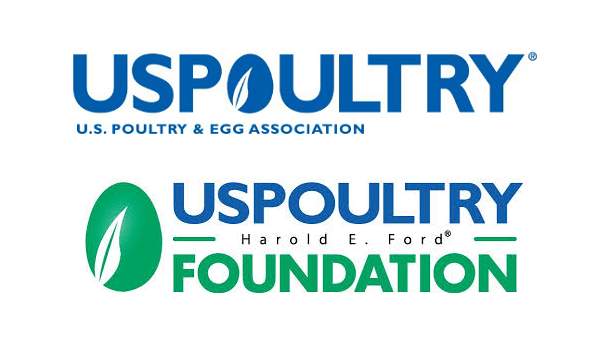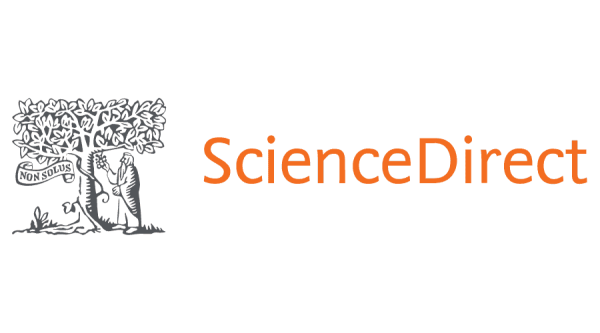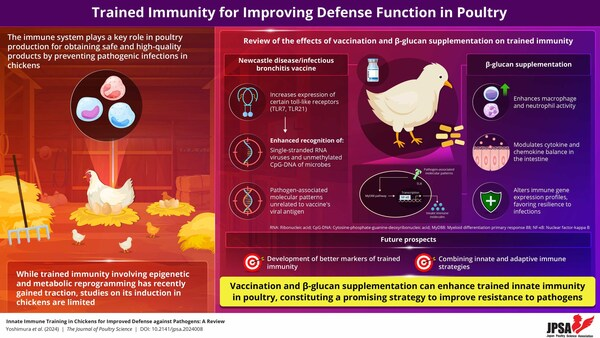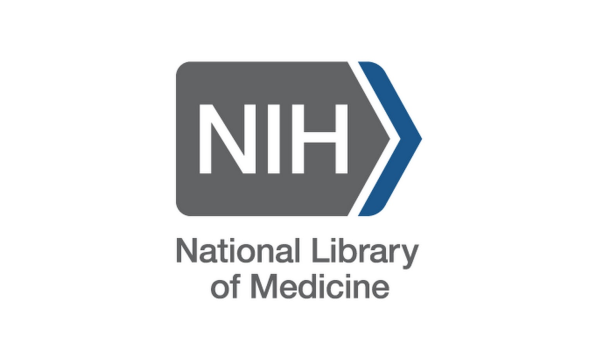
Georgia’s School of Agricultural and Environmental Sciences are using molecular genetics to learn the way pastured and free-range chickens have an effect on the ecosystem on farms the place crops and livestock are raised collectively.
Supported by a $749,000 grant from the U.S. Division of Agriculture’s Nationwide Institute of Meals and Agriculture, entomology doctoral scholar Sofia Varriano and her thesis advisor, agroecologist and applications biology Professor Bill Snyder, are testing the promise of built-in crop-livestock agriculture to increase the sustainability of smaller farms.
“We’re on this group of farmers which have livestock and crop manufacturing all through the an identical farms for his or her operation. As of late we title that inbuilt crop-livestock agriculture, nevertheless 100 years up to now what did we title that? We known as it farming,” Snyder acknowledged. “Every farm, nearly in all places on the earth, had that model. We’re involved about whether or not or not there are factors of that farming methodology which may be useful in a up to date setting.”
Using DNA analysis to demystify diets
Referred to as “Rooster Ecology and Ecosystem Firms,” or ChickEES, the three-year enterprise will factor what the birds on each farm are consuming by analyzing the DNA stays in rooster feces. With this information, producers can resolve how their chickens are serving to to handle pest bugs and weeds.
Whereas evaluation on poultry vitamin in managed manufacturing facilities is plentiful, Snyder acknowledged there’s little obtainable information on what chickens on smaller farms with built-in poultry manufacturing practices are consuming in a pure setting.
“That purchased us involved about what these chickens eat. Chickens are what we title generalist predators, which suggests they’re hungry, and they also don’t care what they eat, whether or not or not it’s a plant or a spider or an aphid or a pest caterpillar — they eat each little factor. Likewise, they eat points like earthworms, which are useful to the soil,” he outlined. “Do they largely eat pests? What weeds do they eat? Are there particular pest species or particular weed species that they like? These are the questions we’re involved about.”
Pure pest administration and soil modification benefits
With this information, producers can modify their weed and pest administration practices to work in tandem with pastured or free-range chickens.
“The farmers we’re working with have these diversified farms, and loads of them intuitively actually really feel that it most certainly has some pest administration profit. This will likely reply that,” Snyder added. “The other issue the animals do is poop, so that’s manure, that’s fertilizer. The animals and the crops can type of complement one another in that methodology.”
Varriano, who bought right here to CAES to test wild birds, pivoted to poultry evaluation when the pandemic closed labs in 2020.
This enterprise focuses on chickens with exterior entry, whether or not or not they’re pastured, free-range or in every other case have the ability to roam open air. DNA samples collected from the chickens are despatched off for analysis to ascertain arthropods and vegetation by sequencing. By evaluating the sequences to a species database, researchers intention to search out out what the chickens are consuming, Varriano outlined.
“The highest goal with these information is to supply growers this information so it might really revenue regardless of farming they’re doing. One system helps help the other. Using chickens to handle pests and enrich the soil to be taught your crops might be one integrative approach,” Varriano acknowledged.
“We have to help growers take full advantage of the chickens that they’ve on their farms.”
Monitoring pathogens in free-range and pastured applications
Together with DNA sampling, the enterprise will uncover potential sources of rooster publicity to Salmonella and Campylobacter micro organism, which could make people sick, using whole-genome pathogen sequencing and panorama modeling. Exploring know-how to help small farmers improve and diversify their manufacturing practices is one step in the direction of enhancing the sustainability of smaller-scale producers.
“The farmers we’re working with are generally selling on to consuming locations, farmers markets and most of the people by community-supported agriculture. To convey people to their farms or serve the desires of consuming locations or fill their stand on the farmer’s market, they need to have all a number of varieties of merchandise,” Snyder outlined. “The vary of merchandise helps to make their farms additional sustainable.”
A pilot analysis Varriano carried out in Georgia revealed that chickens can devour a lot of of a number of varieties of prey on farms.
The group has carried out associated work throughout the Western U.S. between Southern California and Canada to create a broad footprint in a number of climates to search out out what’s typical for the Southeast versus completely different areas.
“In case you have got a rooster that’s stationary versus a rooster that is free-roaming, we’re attempting to predict what their variations in weight-reduction plan will most likely be. In a positive setting, are they going to basically cope with one positive pest or weed?” Snyder acknowledged.
Gathering information from smaller flocks by citizen science
Later throughout the analysis, Varriano and Snyder will solicit citizen-scientist enter to the analysis by asking farmers all by way of the realm to self-submit particulars about their operations along with fecal samples from their chickens.
Providing kits very like these used for genetic household tree, the researchers will solicit samples from small or yard flocks.
“We’ll extract the DNA and do the sequencing, after which we’ll be able to inform them exactly what chickens on their farms — these are the 5 excessive weeds they’re consuming, these are the 5 excessive pests and bugs that they’re consuming,” Snyder acknowledged. “That helps the farmers because of they usually don’t know what additional revenue they’re really getting from these applications; we’ll be able to inform them that.”
The group plans to create a service center with testing know-how to shortly analyze the DNA samples and the varied contributors to each sample, whether or not or not plant or insect.
“We’re in a position to get once more, from one farm, better than 200 weeds and bugs and completely different arthropods that the chickens are consuming, so we attempt to automate that course of,” he acknowledged, together with that preliminary analysis in Georgia have confirmed that chickens are consuming Palmer amaranth, most likely probably the most damaging weeds for producers.
“It does really appear to be there are some positive points they’re absolutely deciding on out. As soon as they’re really confined, chickens simply do filter out each little factor. Nonetheless as soon as they’re foraging freely, it does appear to be chickens have points they really like, akin to pest caterpillars,” Snyder acknowledged.
Analyzing how diversification contributes to sustainable farming
The researchers moreover will monitor how soil prime quality changes when pastured chickens are moved from area to area on farms by performing full soil-quality checks to take a look on the weed seed monetary establishment and extracting DNA from the soil to take a look at microbial biodiversity.
“Chickens, presumably, as soon as they’re coming by and pooping, they’re dropping loads of nitrogen, and that’s most certainly altering the soil microbiome. And is that useful? Is it enhance?” Snyder acknowledged. “There’s some first charge proof that when you may have bigger biodiversity and microbes, it makes it extra sturdy for pathogens to persist. So are they actually enhance the effectively being of the soil in a extraordinarily frequent methodology, not merely with nitrogen, however moreover microbial biodiversity.”
A collaborator throughout the UGA School of Veterinary Medication, Nikki Shariat, an affiliate professor throughout the Division of Inhabitants Effectively being, Poultry Diagnostic and Evaluation Center, will check out samples for the presence of Salmonella and Campylobacter. By performing whole-genome sequencing on the micro organism, they’re going to resolve the place the foodborne illness-causing micro organism originated throughout the farm environment.
“The place on the farm might they be deciding on these items up? We have to see how sometimes they’re present to get some considered what the incidence might be,” Snyder added. “We have to give the growers a full picture — listed below are the pests the chickens are consuming, listed below are the beneficials they’re consuming, proper right here’s your meals safety risk.”
Enhancing native meals applications and farm profitability
The findings have the potential to be taught rising native meals applications in populated areas.
“Economically, in case you have got 10 acres that you just simply’re farming as a substitute of 1,000 acres, you could know the best solution to generate ample earnings. That comes proper all the way down to diversification,” Snyder acknowledged, together with that “chickens in these applications are providing eggs or meat which you’ll be able to promote, they’re providing fertilizer and they also’re providing pest and weed administration.
“In the event you’re attempting to keep up costs low and reduce off-farm inputs as loads as you can, if additional of which may be produced on farm, it’s increased for the producer. We’re serving to those points work collectively,” he acknowledged.
“The upper these producers can carry out, the additional different they’ve for people throughout the public to get pleasure from what they’re doing and for them to make a income.”
Provide: School of Georgia




